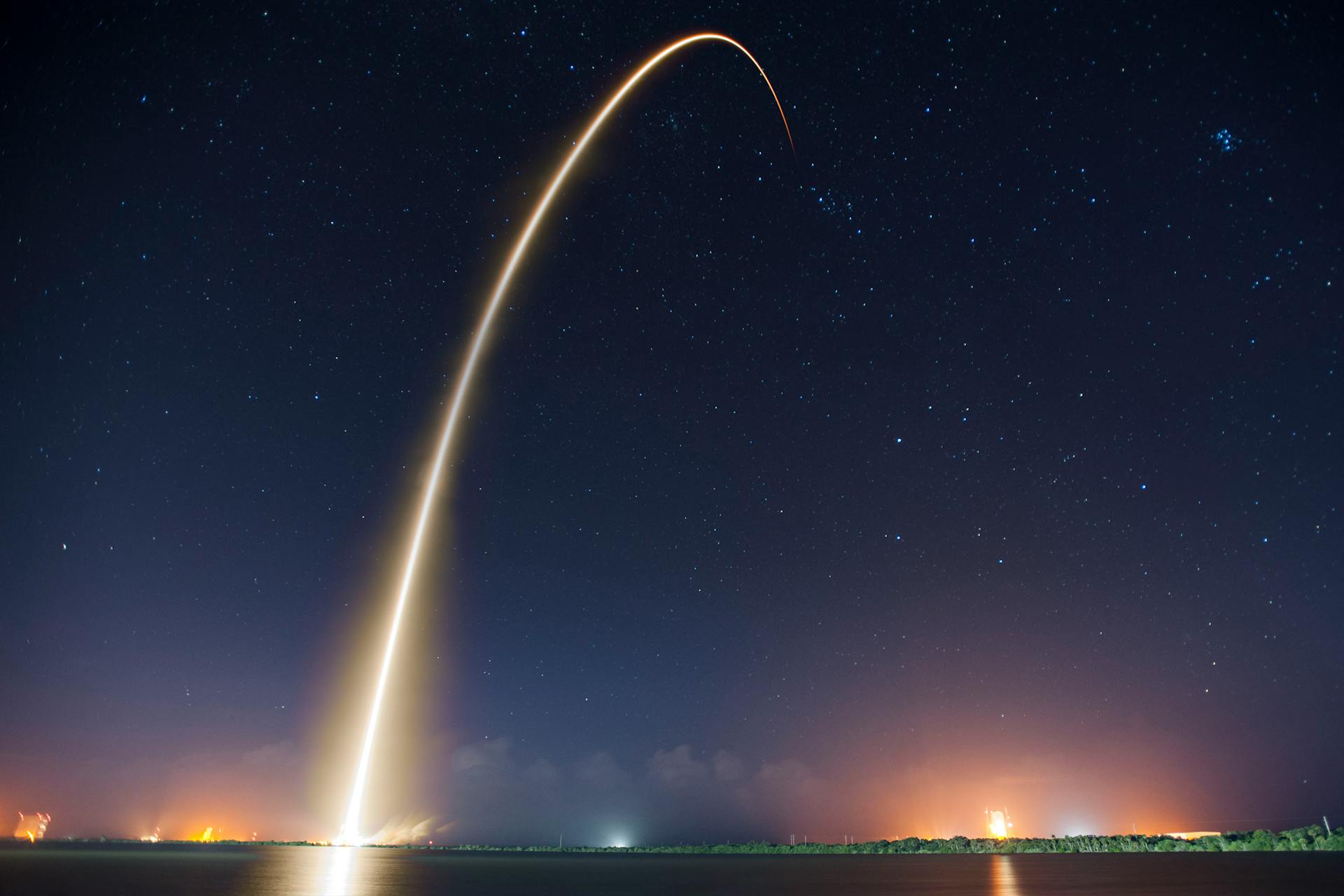SpaceX Introduction
SpaceX, founded in 2002 by visionary entrepreneur Elon Musk, is an aerospace manufacturer and space transport services company. With the ambitious goal of reducing space transportation costs and enabling people to live on other planets, SpaceX has become a major player in revolutionizing the space industry. Their accomplishments are numerous, most notably pioneering reusable rockets that have drastically reduced launch costs, and making history with private space travel missions.
Key Areas of Focus
#1: Reusable Launch Vehicles / Satellites
SpaceX has emerged as a leader in the space industry, largely thanks to its focus on reusable launch vehicles. Traditionally, rockets were built for single-use flights, making launches incredibly expensive. SpaceX’s rockets, like the Falcon 9 and Falcon Heavy, are designed to return to Earth after deployment, dramatically reducing launch costs. This reusability allows for more frequent launches, opening doors for faster innovation and exploration. The Falcon 9, for instance, has become a workhorse for SpaceX, carrying satellites, cargo, and even astronauts into orbit. The Falcon Heavy, a more powerful version, tackles even heavier payloads.
Check out our blog post on Self-Driving Cars!
#2: Starlink Mission
Another ambitious project is Starlink. This constellation of thousands of satellites aims to provide global internet access, even in remote areas. Starlink satellites will orbit Earth at a lower altitude than traditional communication satellites, offering faster internet speeds and lower latency. This could revolutionize connectivity, bridging the digital divide and bringing internet access to underserved regions. However, Starlink’s vast number of satellites has raised concerns about light pollution and potential impacts on astronomy.
#3: Launch Space Exploration Missions – Contracted by NASA
In the realm of human spaceflight, SpaceX has partnered with NASA through the Commercial Crew Program. Their Crew Dragon capsule has successfully transported astronauts to the International Space Station, marking a significant step towards commercial space travel. Looking to the future, SpaceX’s behemoth Starship is under development. This fully reusable launch vehicle and spacecraft is designed for deep space exploration, with the ultimate goal of transporting humans to Mars and beyond. Starship represents a giant leap for space travel, paving the way for a future where humanity can venture further into the cosmos.
Elon Musk Says:
- On making space travel more accessible: “I want to make rockets 100 times, if not 1,000 times, better. I want to make space travel like taking a trip on Concorde, where you can hop on a plane from London to Sydney in a few hours.”
- On the ultimate goal of SpaceX: “The ultimate objective is to make humanity a multiplanetary species. Thirty years from now, there’ll be a base on the moon and on Mars, and people will be going back and forth on SpaceX rockets.”
SpaceX’s Impact on the Space Industry
SpaceX’s impact on the space industry is undeniable. Their focus on reusability has driven a wave of innovation, slashing launch costs by a significant margin. This has opened the door for more frequent launches, allowing companies and research institutions to send satellites and experiments into space at a previously unimaginable pace. This has fostered a more competitive and dynamic space economy, with new players entering the market and established ones re-evaluating their strategies.
However, SpaceX hasn’t had a completely smooth ride. Challenges like complex engineering feats, high development costs, and occasional launch failures are part of the territory in pushing the boundaries of space travel. Regulatory hurdles and competition from established players also present obstacles.
Looking towards the future, SpaceX is poised to continue its disruptive role. The ambitious Starship program, with its reusability and immense payload capacity, holds the potential to revolutionize deep space exploration. Colonization of Mars, once a distant dream, becomes a more tangible possibility with Starship. We can expect to see continued innovation in satellite constellations like Starlink, pushing the boundaries of global internet access. SpaceX’s influence will likely extend beyond launch services, potentially influencing space tourism, resource extraction, and the overall infrastructure needed for a multi-planetary future. Whether these ambitious goals are realized or not, SpaceX has undoubtedly ignited a new era in space exploration, with the potential to shape the future of humanity’s relationship with the cosmos.
Check out our blog post on the Top 5 Sci-Fi Tech We Can’t Wait to See in Real Life!
Conclusion
SpaceX has become a game-changer in space exploration. Their focus on reusable launch vehicles like the Falcon 9 and Falcon Heavy has dramatically reduced launch costs, opening doors for more frequent missions. Starlink, a massive satellite constellation, aims to revolutionize internet access globally. In human spaceflight, SpaceX’s Crew Dragoncapsule serves NASA’s Commercial Crew Program, and the behemoth Starship holds the potential for deep space exploration and even Mars colonization. Despite challenges, SpaceX’s relentless innovation and ambitious goals position them at the forefront of a new era in space exploration, with the potential to shape humanity’s future amongst the stars.
If you’re curious to learn more about SpaceX’s groundbreaking work, check out their official website https://www.spacex.com/ or follow them on social media. Inspired to be a part of the future of space exploration? There are countless opportunities! Look into STEM fields (Science, Technology, Engineering, and Math) or explore internship programs with space agencies and private companies. The cosmos is calling, and with dedication and passion, you too can play a role in humanity’s next giant leap.

